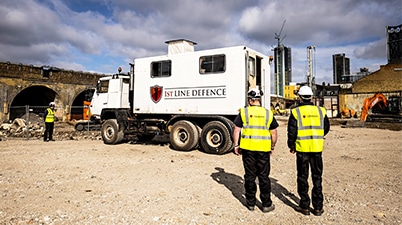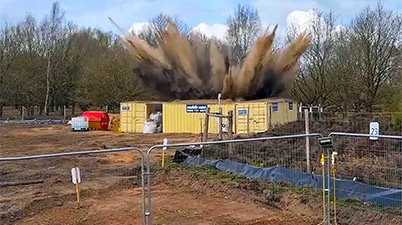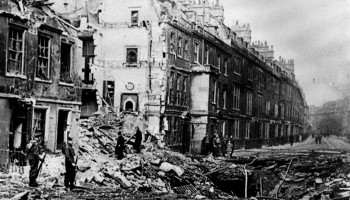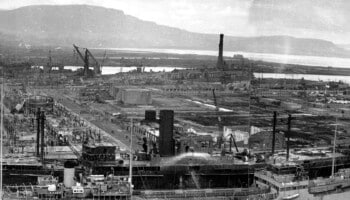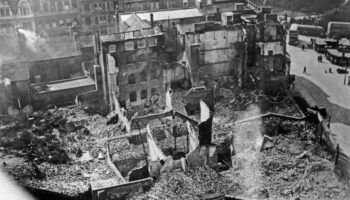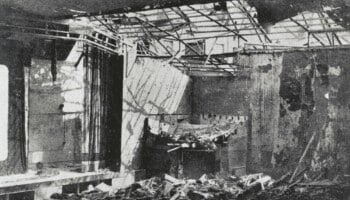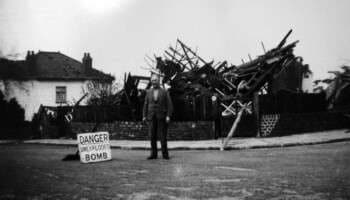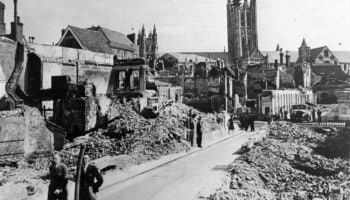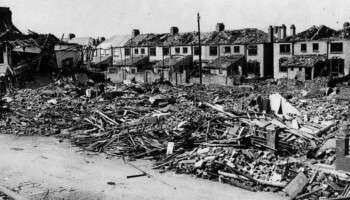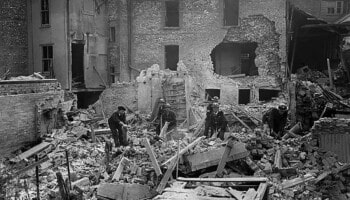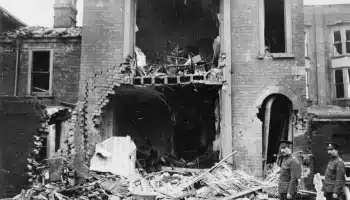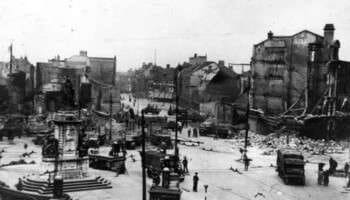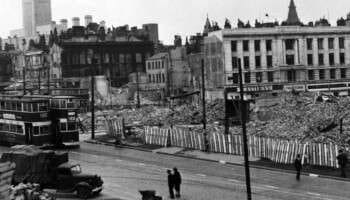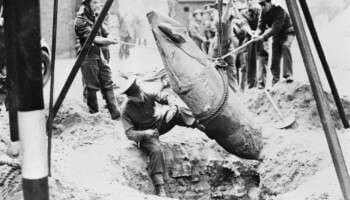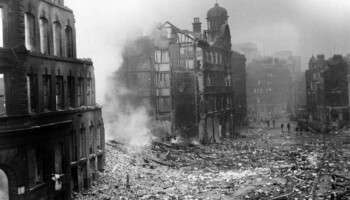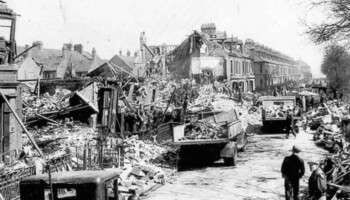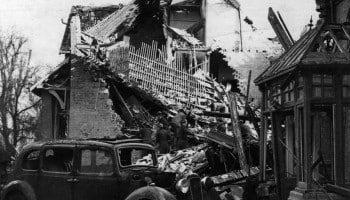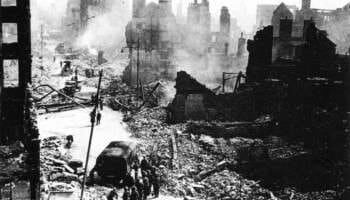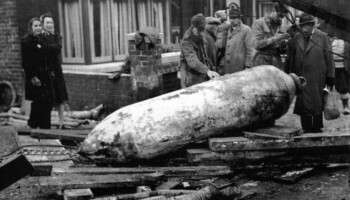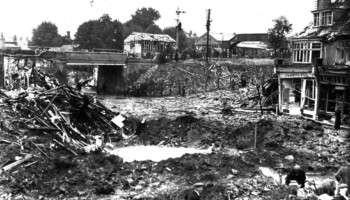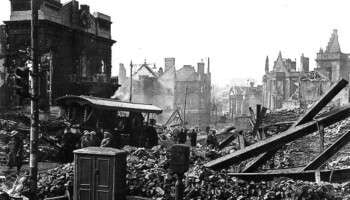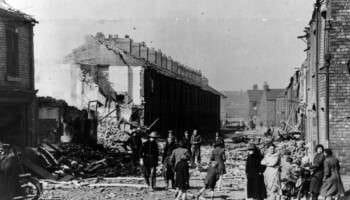Home » Resources » UXO City Guides »
UXO City Guide
Home Office Bombing Statistics for Chelmsford
Record of German Ordnance dropped on the Metropolitan Borough of Chelmsford
High Explosive Bombs (All types)
198
Parachute Mines
10
Oil Bombs
4
Phosphorus Bombs
47
Fire Pots
54
Pilotless Aircraft (V-1)
4
Long-range Rocket Bombs (V-2)
3
Weapons Total
320
Area Acreage
4,772
Number of items per 1,000 acres
67.1
Why was Chelmsford targeted and bombed in WWII?
During WWII, Chelmsford was one of the most important manufacturing hubs in Essex, and was home to a number of significant factories for the Allied war effort. It was often a reserve objective for German bombers that had missed their London targets, as well as an easy target for lone ’tip and run’ raiders.
A number of factories were directly identified by the Luftwaffe, and appeared on reconnaissance maps and images. One such facility was the Marconi Wireless Telegraph Co. Ltd, presented in the following photo dating from October 1941.
Chelmsford was also situated on the General Headquarters Hardened Stop Line. This line of pillboxes, gun emplacements and strongpoints was designed to hold back an anticipated German Invasion, and provide a rallying point for defending troops. Whilst the line was never used to repel an invasion, many of the pillboxes and emplacements can still be seen to this day.
Home Office Bombing Statistics for Chelmsford
Details obtained from the official Home Office bombing statistics, indicates the quantity and type of bombs that fell on the Metropolitan Borough of Chelmsford during WWII (excluding incendiary bombs). A total of 320 recorded bombs were recorded, equating to 67.1 items of ordnance per 1,000 acres.
Primary Bombing Targets
Chelmsford housed two main bombing targets for German bombers:
- Hoffmann’s Factory: This factory produced ball bearings essential for wartime production, including joints bearings and machinery used in thousands of applications – including military vehicles, tanks and aircraft.
- Marconi’s Radio Factory: Known for its pioneering telegraphic communications research and production. Marconi was the centre for military radio production, making man-portable, vehicle and aircraft radios – as well as components for all manner of communications equipment. It also managed several shadow factories across the country producing Marconi equipment under licence.
Major WWII bombing incidents in Chelmsford
One of the worst conventional raids in Chelmsford took place in May 1941, when the Marconi works was attacked. Three 500kg and two 250kg bombs, including several delayed action bombs, were dropped in an accurate raid on the factory. The bombing raid destroyed much of the machine and paint shops, and a row of houses nearby. A number of men trapped in the burning paint shop were killed but the worst incident in Chelmsford was sadly yet to come.
On the 19th December 1944, a German V-2 rocket struck close to the Hoffmann works. The rocket exploded near Hoffmann’s C Factory’s Cage & Assembly Department, devastating the area. The incident caused the town’s greatest loss of life from a single wartime event, with 39 fatalities. Several dwellings in Henry Road were completely destroyed, and many nearby streets suffered damage.
To record bombing over the city, Chelmsford produced a bomb map (see below), which documented the location, type and date of each incident. These are supplemented by bomb damage records, which provide more detailed accounts of the incidents, the resultant damage and any measures taken to remediate the situation.
Both the Hoffmann and Marconi works also maintained their own bomb damage maps and files which provide more a more detailed insight into incidents. The city is also covered by Ministry of Home Security bomb census mapping and tracings, which highlights the precise location, size and details of the bombs which fell during each recorded incident (see example below).
Thankfully, a number of landmarks in the city survived the bombing, including Chelmsford’s magnificent Gothic cathedral; dating back 800 years, as well as the 18th-century Shire Hall and the Stone Bridge (dating to 1784) which also endured the war.
Can UXO still pose a risk to construction projects in Chelmsford?
The primary potential risk from UXO in Chelmsford is from items of German air-delivered ordnance which failed to function as designed. Approximately 10% of munitions deployed during WWII failed to detonate, and whilst efforts were made during, and after the war to locate and make UXBs safe, not all items were discovered. This is evidenced by the regular, on-going discoveries of UXO during construction-related intrusive ground works across the UK – not just in Chelmsford.
Occasionally items of British explosive ordnance are also encountered within inner city areas, including Chelmsford. In Chelmsford’s case, the city was defended by several static AA batteries. These AA batteries would have been in constant action during these raids, and as such a volume of AA shells would have been fired over Chelmsford’s skies, some of which may not have functioned as intended.
I am about to start a project in Chelmsford, what should I do?
Developers and ground workers should consider this potential before intrusive works are planned, through either a Preliminary UXO Risk Assessment or Detailed UXO Risk Assessment. This is the first stage in our UXO risk mitigation strategy and should be undertaken as early in a project lifecycle as possible in accordance with CIRIA C681 guidelines
It is important that where a viable risk is identified, it is effectively and appropriately mitigated to reduce the risk to as low as reasonably practicable (ALARP). However, it is equally important that UXO risk mitigation measures are not implemented when they are not needed.
While there is certainly potential to encounter UXO during construction projects in Chelmsford, it does not mean that UXO will pose a risk to all projects. Just because a site is located in Chelmsford does not mean there is automatically a ‘high’ risk of encountering UXO. It really does depend on the specific location of the site being developed.
A well-researched UXO Risk Assessment will take into account location specific factors – was the actual site footprint affected by bombing, what damage was sustained, what was the site used for, how much would it have been accessed, what were the ground conditions present etc.
It should also consider what has happened post-war – how much development has occurred, to what depths have excavations taken place and so on. This will allow an assessment of the likelihood that UXO could have fallen on site, gone unnoticed and potentially still remain in situ.
Recent UXO discoveries in Chelmsford
Since the war, many items of UXO have been discovered across multiple cities within the UK, with Chelmsford no exception. See the news articles below about UXO incidents and discoveries from national and local press in Chelmsford.
1st Line Defence keep up-to-date with relevant and noteworthy UXO-related news stories reported across the UK, and you can browse through these articles using the buttons below.
Get UXO risk mitigation services from a partner you can trust
UXO City Guides
Got a project in Chelmsford? Need advice but not sure where to start?
If you need general advice about UXO risk mitigation in Chelmsford, contact us and we will be happy to help.
Contact Us
* indicates required fields

